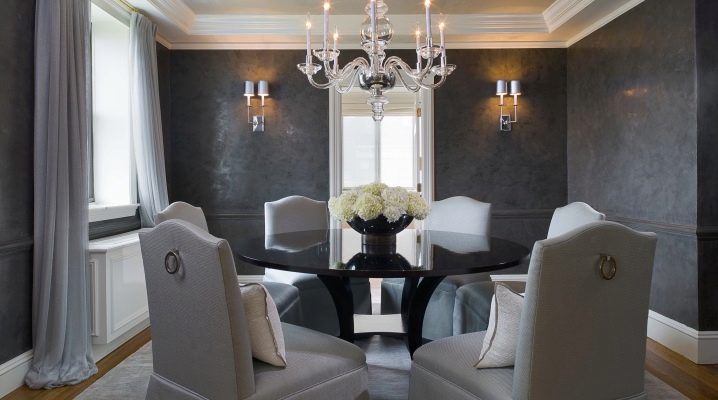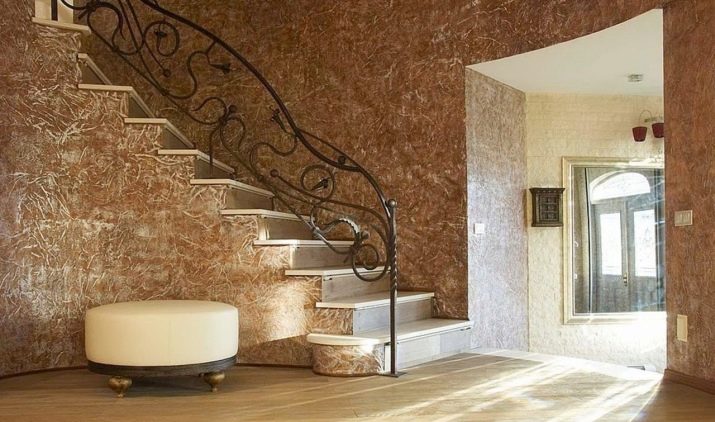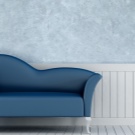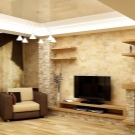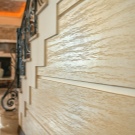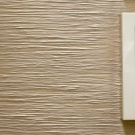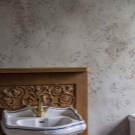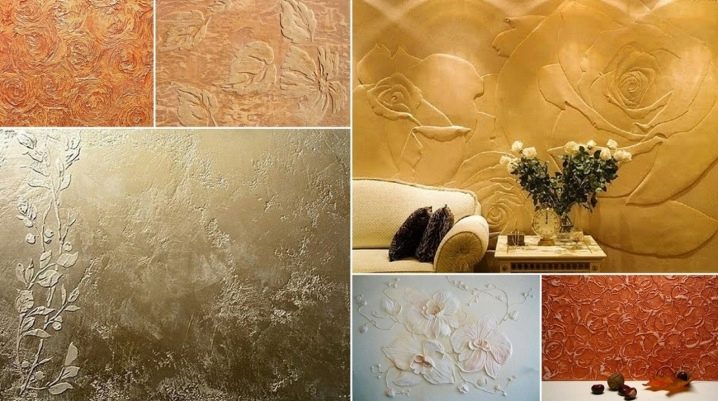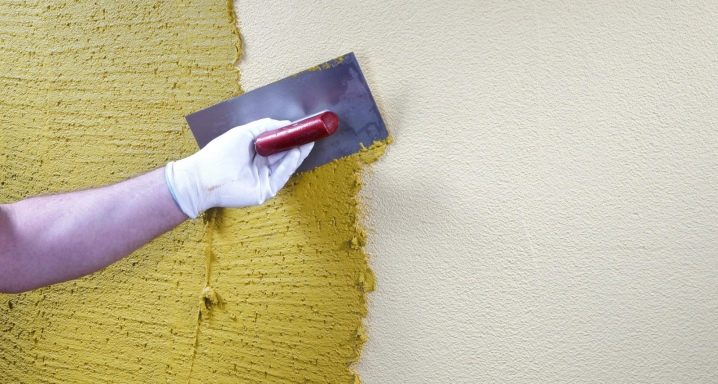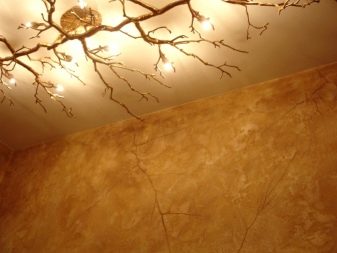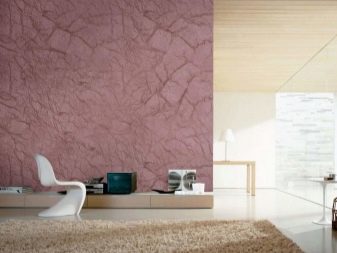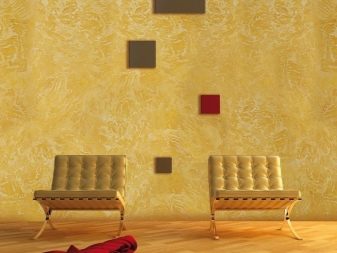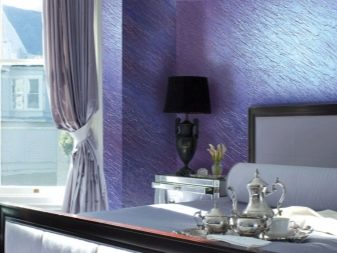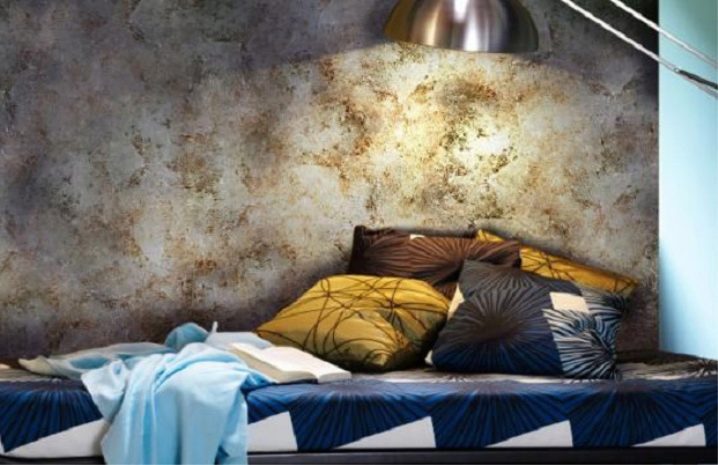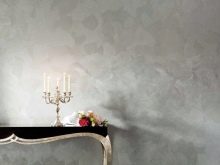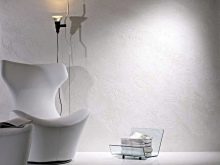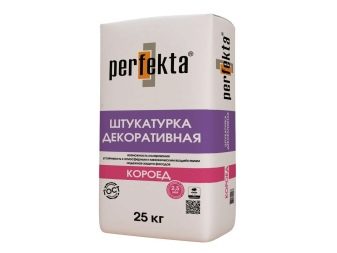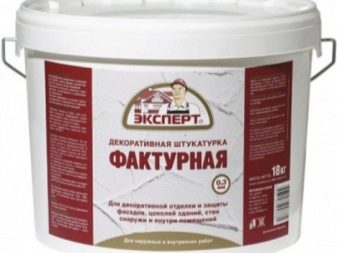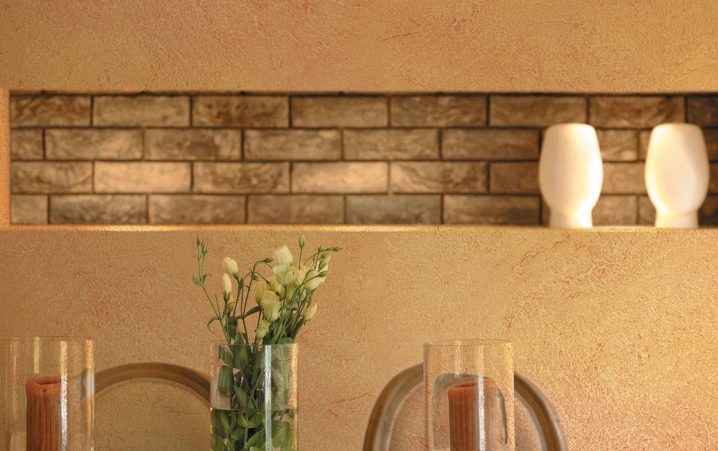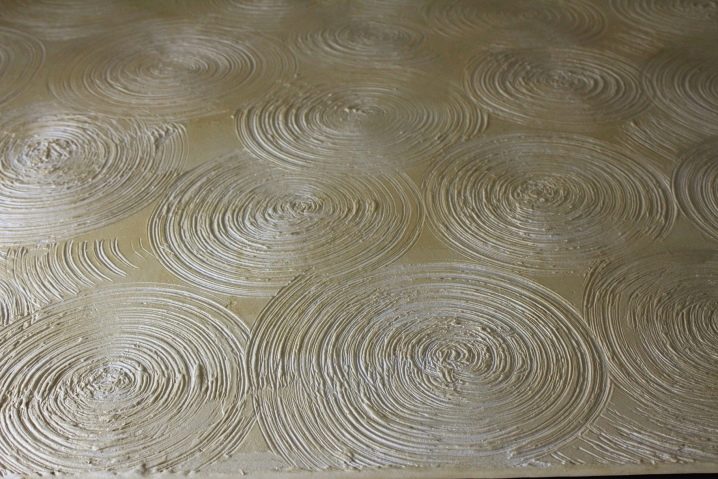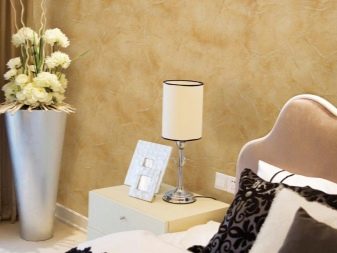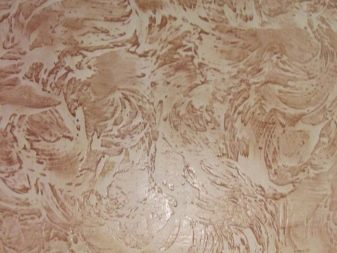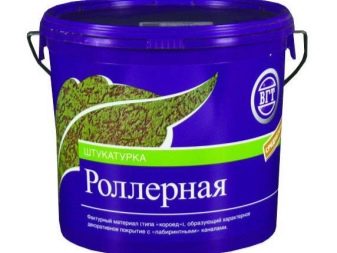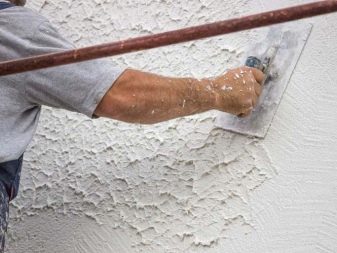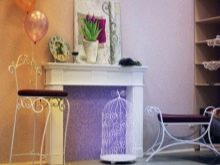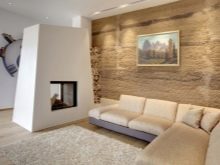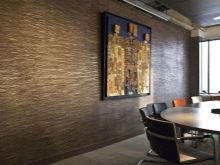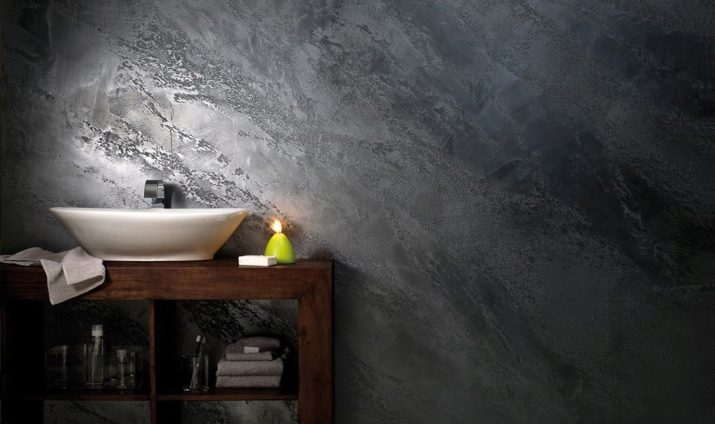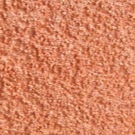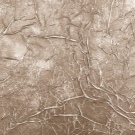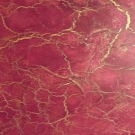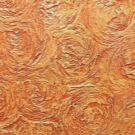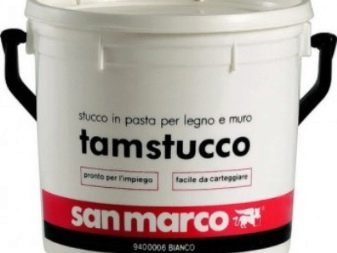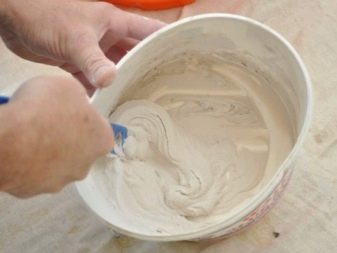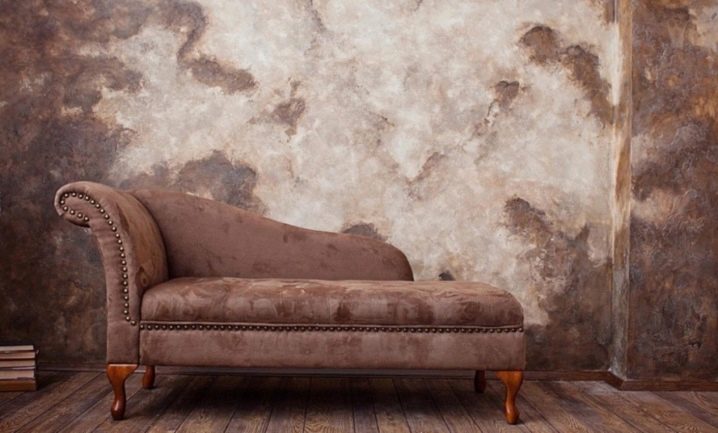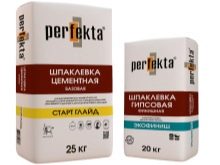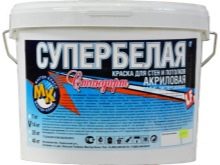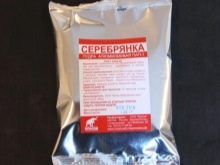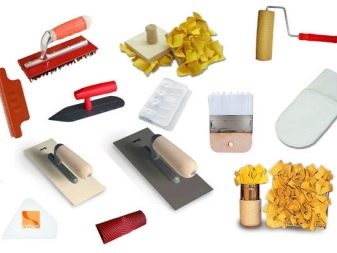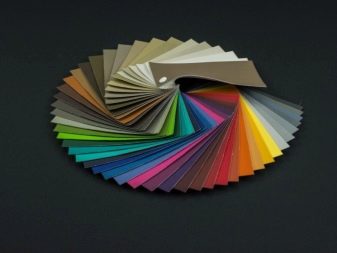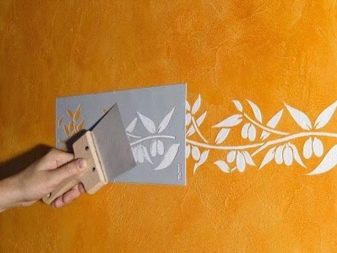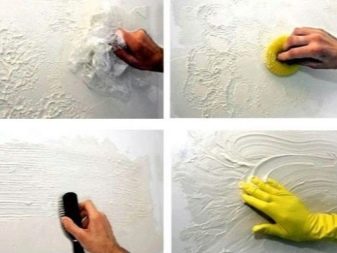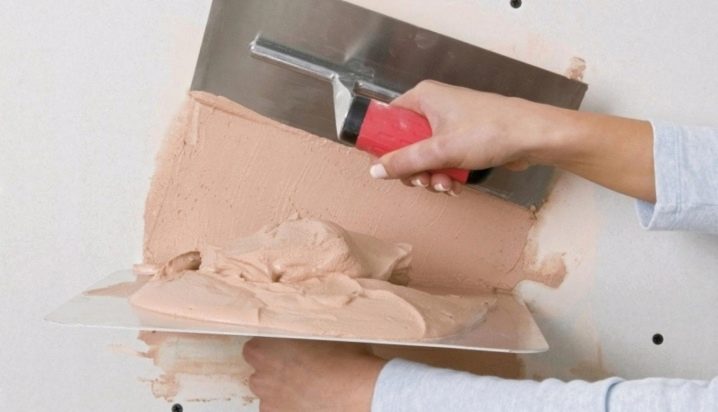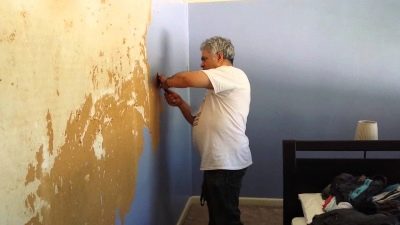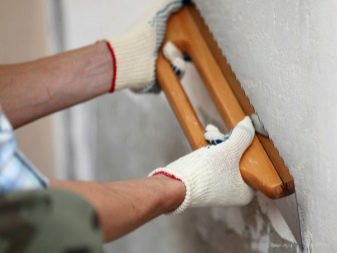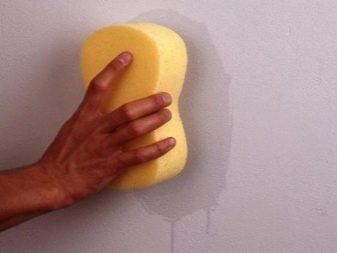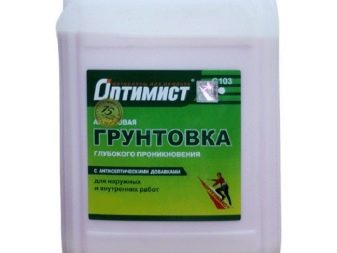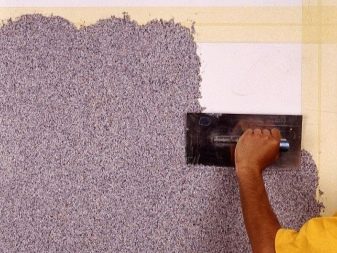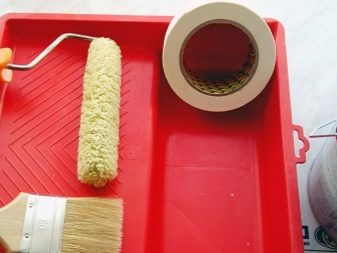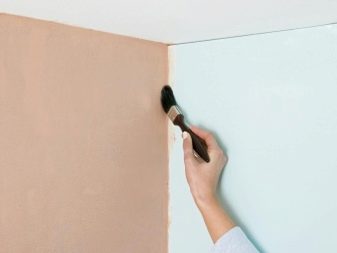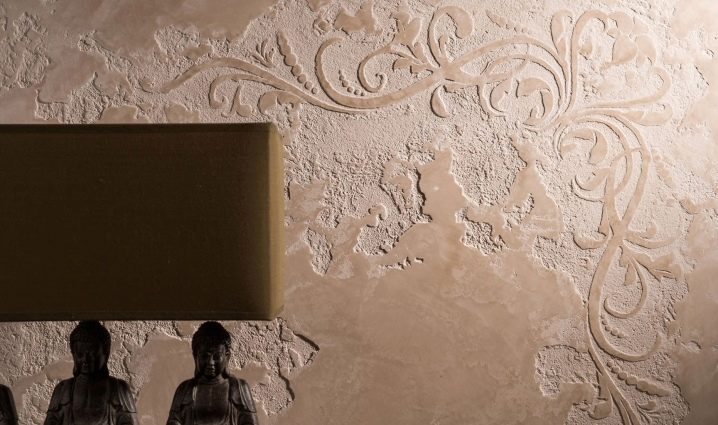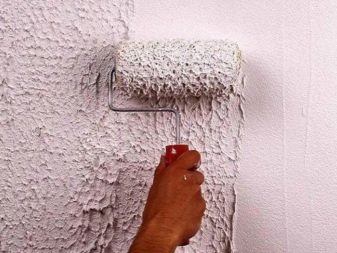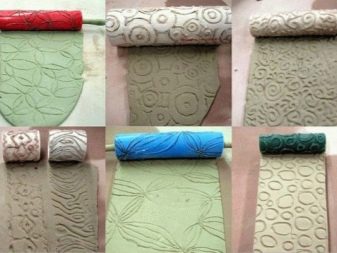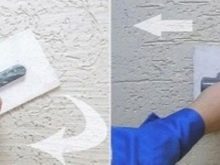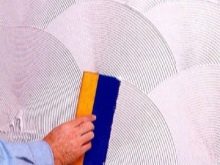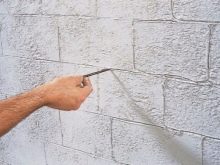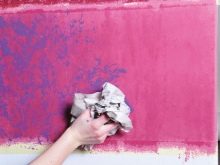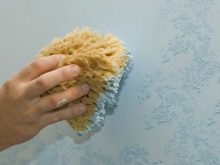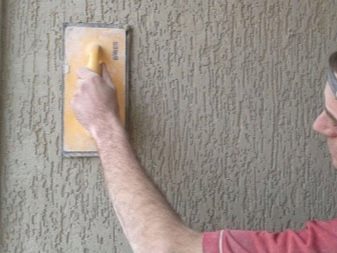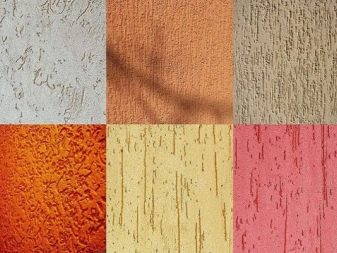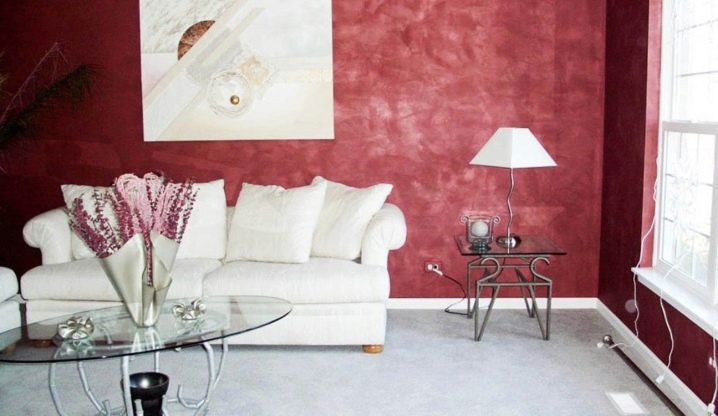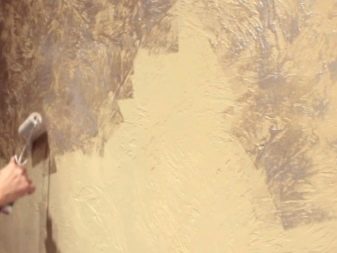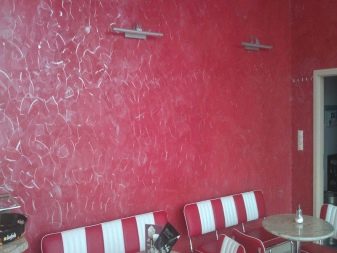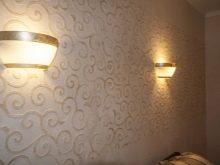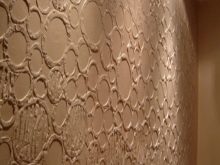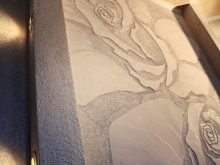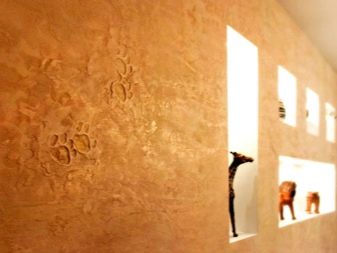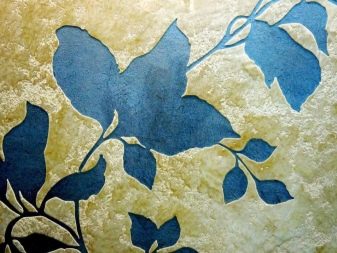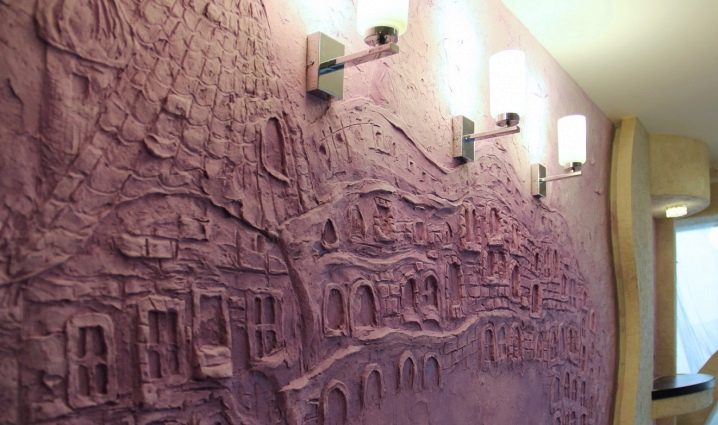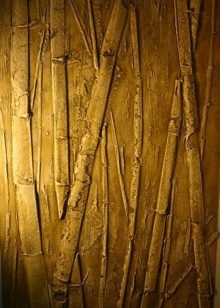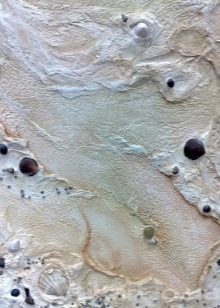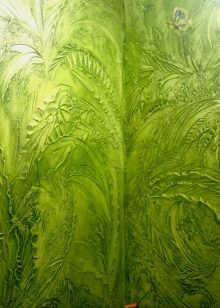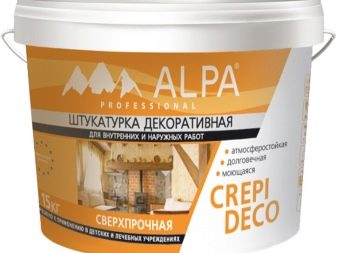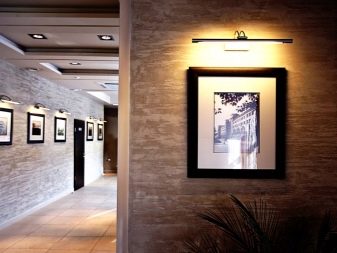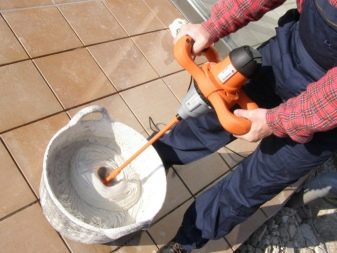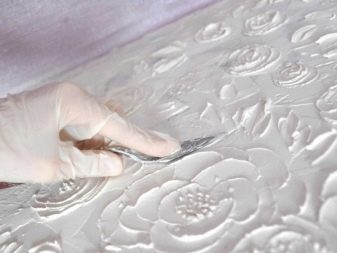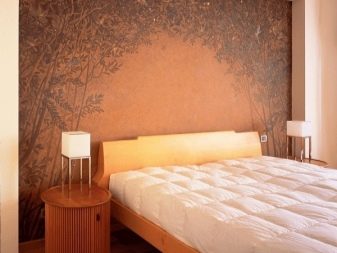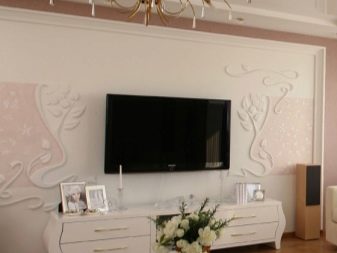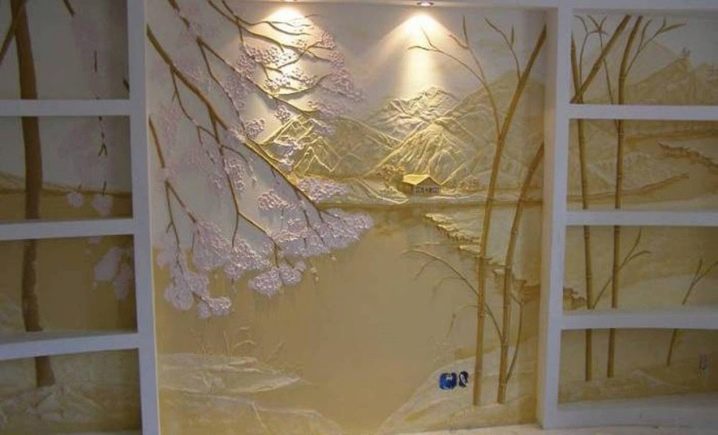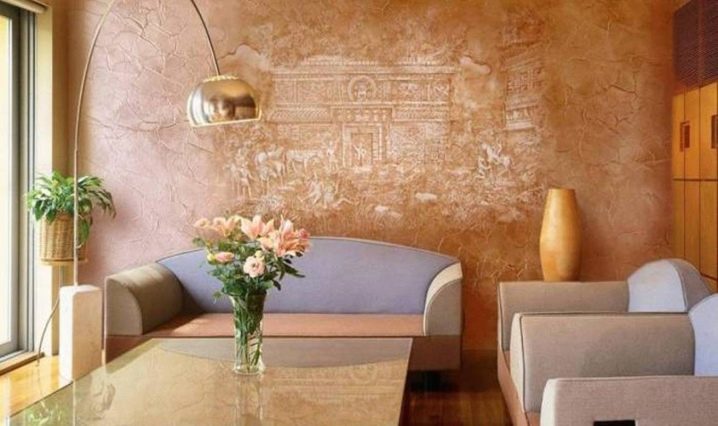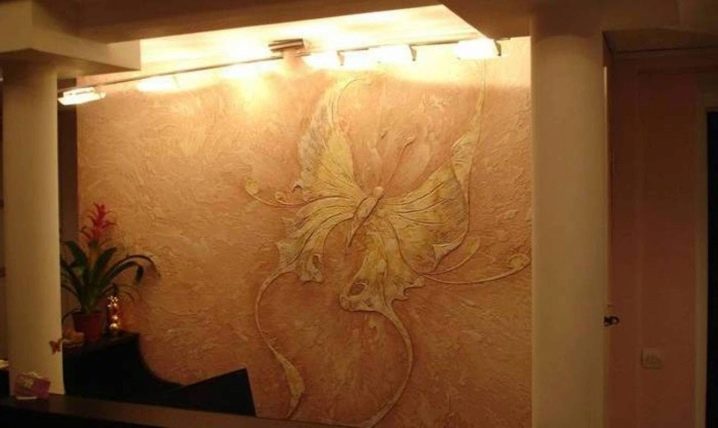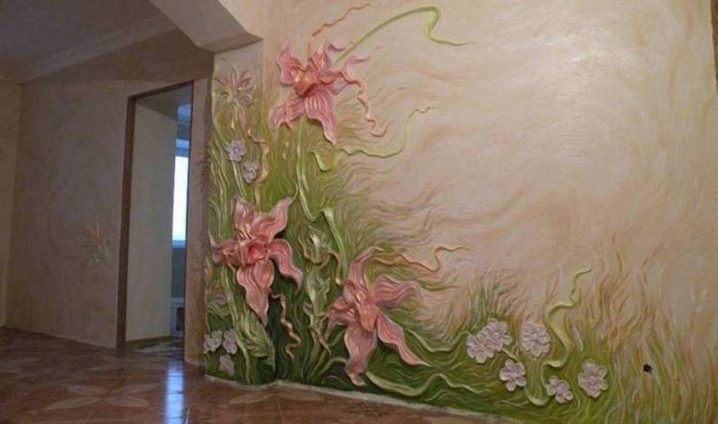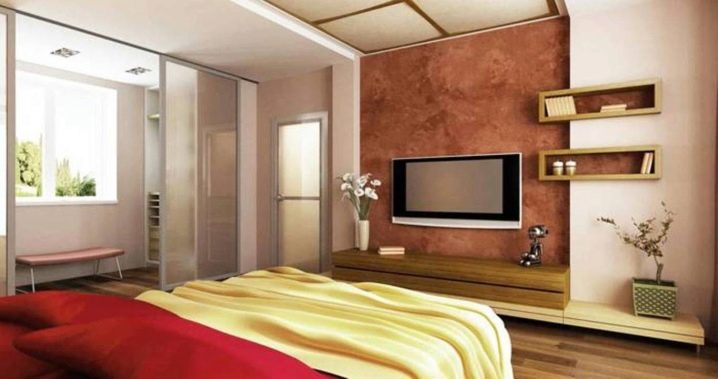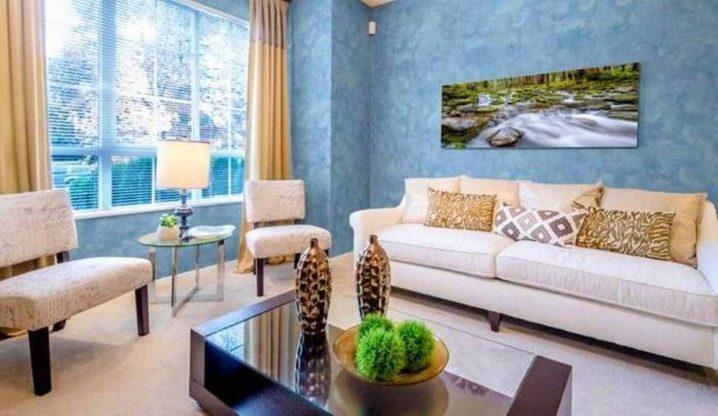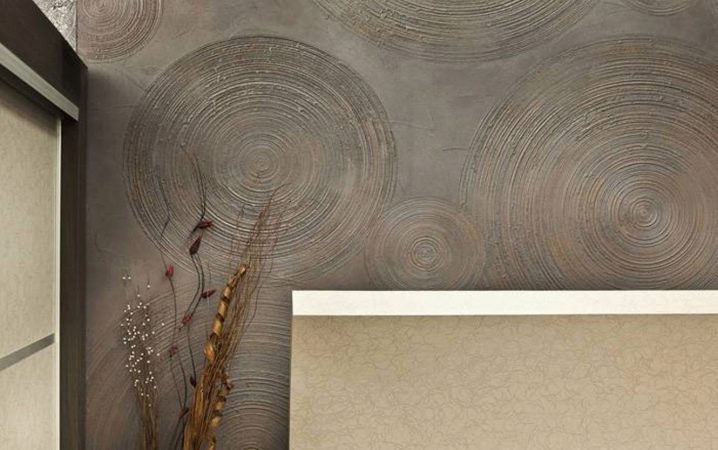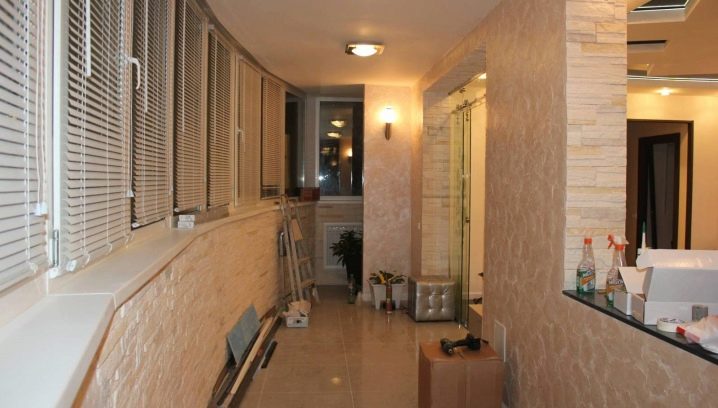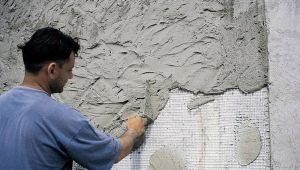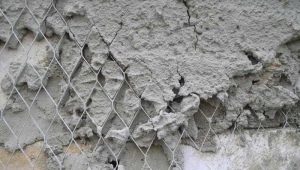Textured plaster: types and features of application
Textured plaster surfaces - an excellent solution when you want to move away from the classical methods of finishing. It represents a lot of opportunities for design, it stands out noticeably against the background of wallpaper, plating and painting. However, not every kind of material is worth buying.
Special features
Textured plaster for walls is a finishing material that is used for finishing the surfaces of walls and ceilings. The composition includes a binder and additional components. Due to this, the material is able to convey the desired texture, eliminating the coating from boring evenness. In fact, such a material - it is nothing but a kind of plaster compositions.
However, unlike them, its structure is predominantly fine-grained. The consistency is softer and tender. For this reason, the material is sometimes used instead of putty.A distinctive feature of textured plaster is a decorative function. It is not a rover of surfaces - it decorates walls with its help, giving them the desired relief and pattern.
The mixture is different plasticity, it is pleasant to work, it also has a higher viscosity, does not respond to temperature changes and elevated levels of humidity. Most of these formulations lack shrinkage after application. Among the lines proposed in the market of building materials, you can find varieties for decorating facades.
Textured plaster is easy to apply. To make a high-quality finish, it is not necessary to invite a specialist - you can save a budget by doing the work yourself. At the same time, the coating is characterized by good durability - when performing high-quality base preparation, it is not necessary to adjust the finish for a long time.
Advantages and disadvantages
Below are the pros and cons of textured plaster.
Among the positive qualities of the material are the following positions:
- This finishing material makes the treated surfaces aesthetically appealing.This design is fresh, not beaten and will allow you to design the interior in the best style directions.
- Plaster is different form of release. You can choose the most convenient option, taking into account your own preferences and existing skills in carrying out finishing work.
- If desired, you can give the surface a different texture. Often, to perform a beautiful picture rather ordinary wave of the hand and roller.
- Facing surfaces with textured plaster can simplify the work. There is a time savings on the walls and ceiling. In this case, the work will take no more than 1 day without prior preparation of the grounds.
- Textured plaster is durable. Due to the components, it will decorate trimmed planes for many years.
- Components of the composition are often resistant to UV light. Over time, the walls will not become faded, coatings will not lose their original attractiveness.
- Textured plaster enhances the insulating properties of the bases. Even with a small relief layer, it will warm the treated surfaces.
- In most cases, such compounds are environmentally friendly.During operation, they do not emit toxic substances. This factor allows the use of mixtures for finishing the walls of residential premises.
- Mixes are compatible with different dyes. You can change the color of the plaster as desired.
- If desired, you can add to the composition of additional components. For example, for the effect of Venetian plaster, it is possible to include nacre in the mixture.
Among the disadvantages of textured plaster are the following points:
- The textured finish is resistant to minor mechanical loads, but with significant impacts, it can break away. Scratches are not excluded if it is done on purpose (for example, the claws of pets).
- Care of such a surface can not be called easy. During operation, dust is deposited on the relief surface. It is more difficult to remove than from wallpaper, paint, laminate or drywall.
- Good plaster is not cheap. This is especially noticeable when performing a large amount of finishing work. More expensive than other ready-made variety.
- Work with textured plaster does not tolerate delays. If you stretch the workflow, the visual alignment of the trimmed areas is not excluded.
- When working with textured plaster increased material consumption by 1 square. m of cultivated area in comparison with other types of finishes.
- Adjusting the surface if necessary is problematic. It can not be done imperceptibly due to the difficulty of selecting the desired shade or pattern.
- In case of violation of the technology of applying textured plaster, cracking, swelling and peeling of the material are possible. The solution should be selected carefully, based on the type of base.
Species
To classify textured plaster can be on several grounds.
In appearance
Decorative finishing material sold in the form of a powder mixture and ready-to-apply composition. In the first case, it is a powder of predominantly white or light gray tint, which must be diluted with water at room temperature before application. The volume of material can be different: bags of 25-30 kg are usually produced.
The finished material is remarkable in that it may already be painted in the desired color and does not need any adjustment before the plastering process. The balanced formula allows perfect application of the base.
Such material is good for processing small areas, however, the lack of a color palette is increasingly forced to apply to dry mixtures.
Below are its differences in composition.
By composition
Mineral
The basis of the decorative material is a cement mixture. In addition, the composition includes auxiliary additives, due to which the mass has plasticity and is convenient for creating relief. Mineral plaster is good for finishing the bases of the same name.
Silicate
At the heart of this variety is a special liquid glass. The mixture has a high vapor permeability. It is universal: suitable for use on surfaces of any type. The main characteristic of the composition is resistance to adverse external factors, which affects the cost of plaster. Sold as ready mix.
Silicone
Treats one of reliable plaster mixes which main component is synthetic pitch. Due to the high quality and performance characteristics it can be used for surface finishing indoors, as well as facades. Possesses high plasticity, is suitable for the mineral bases.
Acrylic
At the heart of acrylic varieties is acrylic resin. This texture is quite viscous, in most cases, this plaster is ready for use. It is combined with mineral and typical surfaces, including concrete bases. Slightly inferior in quality to the silicone counterpart, but for interior decoration is an ideal material.
By the possible effect
Decorative plaster has different effects. Manufacturers indicate its patterns directly on the packaging. For example, on sale you can find a roller type. The composition is produced on acrylic and plaster basis in the form of ready-to-use mass. The characteristic texture of such a finishing material is manifested in the process of mashing.
At the same time, the fact that manufacturers have provided different shades of plaster coatings is pleasing. For example, on sale you can find colored plaster of copper, pinkish, mustard tones and the color of oak wenge. Structural plaster is a "breathable" material, it is characterized by high technical characteristics.
By structure
According to the structure, other species include such species as “lamb”, “Turkish skin”, craquelure, and also pearl fine-grained mass. This can also be attributed to the Venetian mixture.Such compositions facilitate the work of a novice and professional master. It is pleasant to work with them, simply and quickly.
Manufacturers
The market of textured plaster is filled with offers for buyers of different circles. Great success in this field was achieved by the manufacturers of Italy. Among the wide range of offers, there are several companies that have received high marks from specialists in the field of construction and repair:
- Tamstucco - a pasty form based on vinyl polymer.
- VGT- special plaster with synthesized artificial components and crushed rocks of materials. It is resistant to snow and rain.
- Intonachino Minerale - mineral material based on lime and quartz sand.
- Stuccofacile - resistant to shrinkage and cracking plaster, designed specifically for the creation of bas-reliefs.
How to make the material yourself?
Today it is not difficult to make decorative plaster yourself. For example, a conventional putty for this is suitable using some additional ingredients.
With white glue
The first thing you need to take the usual white putty, mix with water in a special container in the proportions 6: 2. After that, add 0.2 liters of PVA glue and stir to complete homogeneity.
If there is no such glue on hand, you can replace it with a trowel mix designed for drywall in a 1: 1 ratio.
With primer
The main components are the powder composition of white color and the primer, the proportion should be about 6: 2. The mass is kneaded to the texture of thick sour cream, and then the mash mix or pigment is added if colored plaster is needed. The solution is re-stirred and applied to the walls.
With plaster
For such a plaster they use a plaster variety and water. The proportions of the composition remain the same: 6 to 2. However, for the viscosity it is necessary to improve the mixture with PVA glue (0.2 l). After the first mixing, leave for a few minutes, then mix again and begin to perform finishing work.
With baby
Marble effect can be obtained if you mix the usual putty with marble chips in the following ratio: 1 part of the crumb into 4 parts of the putty. The mass is kneaded in a special container, adding water at room temperature to the consistency of thick cream. If you need a colored finish, then it will have to paint after the surface is dry.
Venetian
Here you have to buy a special putty.To recreate the desired effect, you must include in the composition of marble, quartz, malachite chips, lime and pigment. Dilution of the powder mixture with hot water is unacceptable. The consistency should not be too thick - it will not give the desired effect.
Versailles
The recipe consists of starting and finishing putty on the basis of powder, acrylic paint and the usual silver powder. The ratio of components is 1: 1. The silver coin is used after the textured surface has dried.
Tools for work
The set of tools needed for finishing is small. Depending on the type and pattern of decoration you may need:
- special textured rollers;
- classic rollers with a long nap;
- plastic film or vegetable mesh;
- leatherette, textured textiles;
- trowel, trowel, spatula;
- massage brush;
- ordinary and annular sponge for dishes;
- nails;
- newspaper.
In addition, you can use more non-standard techniques:
- moldings;
- stencils;
- anti-stencils;
- ordinary leaves;
- washcloth;
- fingers.
Flight of fantasy in this case is unlimited. However, before dwelling on a specific option,you should try to make a pattern on a small section of the wall or a piece of fiberboard - this will allow you to personally evaluate the possibilities of design and the relevance of the selected texture. For applying plaster mix using a trowel or trowel.
The wooden version is better not to take into account - in the process of work the composition may stick to it, which can complicate the finishing works.
Recommendations for application
The process of finishing the surfaces with a liquid small volume mixture should be considered in detail - this will allow you to understand the essence of the work and to eliminate possible defects typical of plaster when moving away from the stages of the technology.
Surface preparation
To finish the coating was beautiful and uniform, can not do without preliminary preparation of the base. This item is mandatory and includes several steps:
- Remove old cover. It is necessary to remove the old paint, remove the wallpaper, soak them with water from the spray. Also remove the exfoliating layers of lime and all that does not stick to the surface.
- After the coating has been removed, a visual inspection is carried out.It will show what type and volume of starting material will have to be used to prepare the base.
- First remove the bumps, then align the irregularities, pits, chips and hollows. If there is little work, you can use ready-made starting material or putty.
- After alignment, the surface needs to be polished - this evens out minor irregularities, if they turned out during the preparation of the surface.
- After grinding on the walls and ceiling (during its processing), dust will settle, which should be removed with a semi-dry sponge with a soft working surface or a clean semi-dry rag.
Then prepare a deep penetration primer. The composition must be selected for the desired type of walls. It should be with greater penetrating power, which will bind the remnants of dust, align the microcracks and the structure of the base as a whole. For applying decorative plaster mixes, a variant with quartz sand in the composition is preferable, which will create good adhesion, thanks to which the plaster mix will hold onto the walls and ceiling for a rather long time.
Treat the surface under the textured plaster is primed, dipping the roller in a container with a solution and rolling over the entire area of the walls. In the corners you need to use a flat brush.
After the first layer has dried, another layer needs to be applied - this will strengthen the crystal lattice formed on the surface.
You should not try to reduce the time and apply 2 layers of primer at once - this can destroy the film. To prepare the base, you should use a white primer that will allow you to see where the primer is applied. The white color of the soil will not distort the color of the finishing textured mix.
Ways to create relief
Below are a few simple ways to create a relief pattern. Initially, the mass is applied to the dried soil layer with a layer of small thickness (0.3-0.6 cm).
Roller
This method is one of the simplest and fastest types of work. It is that after applying a layer of decorative plaster you need to roll the surface from top to bottom once. In this case, use the film, clothesline, vegetable net, leatherette, winding one selected type of material forming the relief.If you need a rough surface under a fur coat, then use a roller with a long nap.
Spatula
In this case, it is preferable to use a plastering bucket for application and the rule is that this approach will reduce the time to finish and draw a picture on the entire area of the wall at once.
It is with a spatula that waves, zigzags, and finishing with imitation of brick, marble, and stone are performed. Depending on the type of pattern, the movements can be straight, arcuate or chaotic.
Washcloth, newspaper or nail
In these cases, all individually. Each type of "inventory" provides its pressure and full finish the entire cultivated area.
The nail is usually "painted", making the grooves in the plaster. This is a good way to imitate, for example, brick or masonry. Newspaper crushed, forming folds. A small lump is applied to the base with applied plaster mixture. The same technology execution pattern washcloth.
"Bark Beetle"
An interesting and easy way to do the drawing. Externally textured coating "bark beetle" is similar to the bark of wood, sharpened by beetles. So that the process of creating the necessary texture does not take much time, they buy a special plastic or wood trowel with a special type of working canvas.The trowel is applied to the layer of plaster 5-7 minutes after its application, slightly shifted up and down.
Sometimes masters prefer the transverse direction of the pattern.
In Venetian style. Reception of two-color drawing
First, a base tone is added to the composition, the mixture is applied to the substrate, spreading over it in a thin layer. As soon as the layer dries, it is trimmed and cleaned. After that put a layer of primer.
Then plant a new batch, divide it into 2 parts, painting one color with different saturation. On the wall cause small portions, alternating between dark and light tone. After drying, the coating is varnished.
Versailles Reception
After applying the plaster mass, it is trimmed and the drawing is performed with a trowel in chaotic movements or waves. When the pattern dries, it is trimmed, then removed from dust and painted with water-based paint. After that, take a silverfish and slightly emit protruding elements of the relief. It remains to cover the plane with a layer of varnish diluted with water.
Dressing
Design solutions that can be implemented through decorative textured plaster, are multifaceted.Its undoubted advantage is the possibility of using it in any room of an apartment or a private house, as well as a summer house.
The best type of decoration of the finished surface is the use of stencils over the main pattern. This technique allows you to give the walls or the ceiling a special effect. The coating becomes the "highlight" of any interior.
Molding is one of these types. The principle of work consists in easy pressing in the put layer of plaster. You can buy ready-made samples with slits in the form of a specific pattern.
If you want individuality, you can make them yourself from cardboard or use available tools. However, for example, only a designer can professionally use leaves of plants or flower petals. An inexperienced master is better and easier to use ready-made templates.
With the help of a protruding relief, you can draw an original design in any part of the wall or ceiling or, for example, a floral motif. If necessary, it is possible to paint - this approach will create a 3D effect. The technology is the application of the template in the right place and filling the slots with plaster.
This technique can perform different patterns: from petals and bamboo stalks to complex compositions. If artistic skills allow, then brushstrokes really create whole pictures. Sometimes a creative approach involves decorating surfaces, in addition to plaster with shells and small pebbles. Such patterns from afar often resemble the seashore, while others, after the hands of professionals, resemble the tropics.
You will learn more about the technology of applying the plaster by watching the following video.
Useful tips
To finish did not cause difficulties, you need to start with the purchase of a good decorative mixture. To do this, note a few simple recommendations:
- If you plan to finish large areas, it is better to buy powder material - it is economical, eliminates waste and is easy to store.
- It is worth carefully looking at the purpose of the mixture, which is indicated on the label by the manufacturer. If you ignore this aspect, the buyer risks buying inappropriate material, which will affect the result.
- To correctly buy the desired composition, you must take into account the peculiarities of its application and the conditions of the planned operation.
- The material is not taken abutly, as in the process of finishing the surfaces a marriage is not excluded, and the lack of material can spoil all the work.
- Mixing plaster with a construction mixer reduces the time of use of the mixture: the better and more fluffy the mass is whipped, the faster it dries.
- It is necessary to thoroughly wash the container before mixing the new batch - hardened remnants of the plaster mixture will cause the heterogeneity of the fresh mass.
- The pattern is not applied twice. You should not rely on a constant adjustment - it spoils the integrity of the executed figure.
- To make a Venetian pattern, you can buy a special spatula with the desired relief - this approach will allow you to make a drawing at a professional level.
- Do not allow different thickness of the applied layer. The relief coating must be uniform, otherwise the effect will be different visually.
- Decorative plaster and liquid wallpaper - not the same thing. Do not confuse them, because it is the plaster mixture that will give relief and allow you to paint on the surface.
You should know that each style is characterized by its own shades and patterns. Textured decor of each direction is individual.For example, for a loft style, a brickwork pattern is preferred. Cabinet or bedroom in the spirit of vintage trends can be decorated with Versailles or Venetian plaster.
In the living room of ecological style, texture plaster with a volumetric pattern, made using stencils, will harmoniously fit in.
Popular patterns: examples in the interior
This example allows you to evaluate the transmission capabilities of the depth of the image. Light colors, related colors and lighting together with the work of a professional create a special design of the wall.
No less stylish design solution, transmitted through the relief and the game of shades. The coating looks expensive, fills the design with the atmosphere of home comfort.
An example of the decoration of textured surface volume panels in the form of a huge butterfly. The atmosphere of lightness is transmitted, the accent is harmonious against the general background of the room.
One of the best decisions for registration, for example, a bedroom or the nursery. Creating relief with subsequent coloring radically changes the idea of the capabilities of plaster mixes.
A classic example of accent wall decoration in a bedroom. Everything is simple, modern and stylish.
An example of a full decoration of the living room. A great alternative to wallpaper and paint. Feels fresh and light.
This pattern can decorate the walls of the corridor or hallway. The use of two shades - gray and beige - makes the pattern interesting.
An example of emphasizing the dining area of the kitchen. Aged surface type and the application of large letters allows you to convey the atmosphere of the desired era.
Reviews
The use of textured plaster allows you to make the interior of the house special. Numerous reviews of those who decorated their house with such decor eloquently speak about it. In the comments left on the forums dedicated to the construction and repair, it is indicated that such finishing can be done in any room. In the reviews, the fact was noted that with its help it is possible to decorate even the “problem” places of the apartment.
For example, a roller mixture looks harmoniously on a loggia or balcony. At the same time, having resistance to temperature changes, it does not change its properties, keeps well and does not crack. In addition, the comments indicate the possibility of painting some types of plaster coating.
However, if you need to varnish plaster, it is necessary to dilute it with water by half. Otherwise, according to the masters, the surface of the finish will be damaged by visible film.
Users note the lack of ready-made mixtures - this is their poor color gamut. Sometimes small-scale plaster seems to be too expensive coating. However, everyone agrees that you need to buy high-quality finish.
